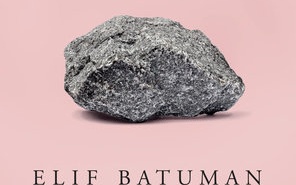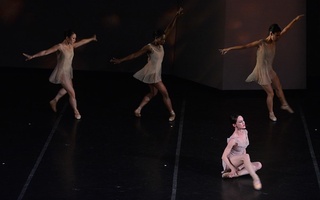Boston Ballet’s revival of “Don Quixote” is a fluffy, lighthearted romp that forgoes a sense of plot in favor of character, allowing the superb technique and humor of its dancers to shine through. Fortunately, the dancers’ energy and comic bravura compensate for any lack of emotional impact in the ballet.
The Boston Ballet opened its 43rd season last weekend with “Don Quixote,” which runs Oct.19-29 at the Wang Theatre. Last performed by the company in 2003, “Don Quixote” boasts choreography by acclaimed dancer Rudolf Nureyev, who also starred in Boston Ballet’s 1982 production of the piece.
The three-act ballet pays little attention to the delusional Miguel de Cervantes famous novel, instead focusing on the love affair between Kitri and Basilio, two relatively minor characters. Artistic Director Mikko Nissinen’s love for this particular version of the ballet is obvious, and his dancers attack every movement with enthusiasm and wit.
The choreography, as a whole, is technically challenging and often belies the cheery, lighthearted texture of the ballet.
In the Oct. 20 evening performance, Larissa Ponomarenko’s performance as Kitri was both spirited and graceful. She is flawless in her technique, particularly her controlled and sustained extension. Ponomarenko triumphed in Act III at the end of an exhausting performance with a series of fouette turns, executed with tireless accuracy.
Though Nelson Madrigal’s Basilio is animated and energetic, and the two complement each other on stage, the audience can’t help watching Ponomarkeno rather than Madrigal when the two are together. Ponomarenko’s comic timing reflects a surprising level of sophistication. She embodies Kitri’s coquettish character beautifully; Madrigal, though less magnetic, also has his chance to shine, exploding on the stage with an incredible series of leaps and turns in Act I.
Kathleen Breen Combes, the most delicate member of the Dryad trio in Act II, brilliantly executes a series of turns in her variation.
Act II, in general, is the most traditional portion of the performance, characterized by long synchronized sequences with several rows of dancers. The corps commands less of the stage than in the first act, but nonetheless compels the audience with their astonishing synchronization.
Of all characters, however, Joel Prouty as Sancho Panza and Mindaugas Bauzys as Don Quixote are the audience’s favorites. While their parts are not as technically exhausting as some others, their theatrical approach makes the audience want to see more.
The dancers seem to have the most fun in the first act where the choreography is more free-spirited and athletic. Despite the technical difficulty of many sequences and the rapid succession of people vying for center stage, they never stay out of synch for more than a few counts.
Most impressive is how the ladies wield their fans, flicking them open with barely snap of the wrist; the fluttering fans add a sense of grace and style to their footwork and also function as props. Adding to the Spanish flavor is Kitri’s use of castanets in the first act, which she pairs with twisting arm motions and Flamenco-style footwork. The matadors who appear in Act II wield heavy black and red capes that they move about with visible effort but precision.
The large ensemble in the first act does give the stage a cluttered feel that sometimes obscures the important characters. It’s not always apparent where the audience should be looking, but the spectacle is so rich that it hardly seems to matter.
Costume and set designer Nicholas Georgiadis was reportedly influenced by Goya. The black costumes of the matadors and red shawls of the women in Act I effectively transport the audience to a lively Spanish tavern. In Act II, however, the Spanish references are completely lost on the audience—the Dryads wear white sparkling numbers that look more appropriate for “Swan Lake” than a medieval Spanish setting.
The grand set changes from scene to scene also succeed in creating a sufficiently fantastic backdrop for the lively choreography. The famous windmill from the novel appears in the second act and does not disappoint. Don Quixote’s hallucination of a smoke-enveloped Dulcinea in Act II Scene II, though haunting, is visually dark and gloomy against the otherwise cheerful performance.
In the end, the sustained energy of the dancers throughout a technically challenging performance outshines any inconsistencies in plot or visual spectacle. Even if Don Quixote himself is sidelined as a character, the audience appreciates his fantastic vision of reality that drives the visual spectacle of the performance.
Read more in Arts
Dawkins Says God Is Not Dead, But He Should BeRecommended Articles
-
'Viewpointe' Provides New Perspective on DanceFrom the classic works of Balanchine to modern pieces choreographed by students, “Dancers’ Viewpointe VII” brought a high level of
-
Harvard Ballet Company’s 'Jungle Book’ A Wild SuccessFrom the set design and music to the dancing, Harvard Ballet Company’s “The Jungle Book”—which opened in the Loeb Ex on April 3 and runs through April 11—is executed exceptionally well.
-
 Author David Black Discusses Latest Work in Kirkland
Author David Black Discusses Latest Work in Kirkland -
 Arts Asks: Elif Batuman on Autobiographical Inspiration
Arts Asks: Elif Batuman on Autobiographical Inspiration -
 José Mateo Ballet’s “Assault on the Senses” Blends Vigor With Grace
José Mateo Ballet’s “Assault on the Senses” Blends Vigor With Grace













